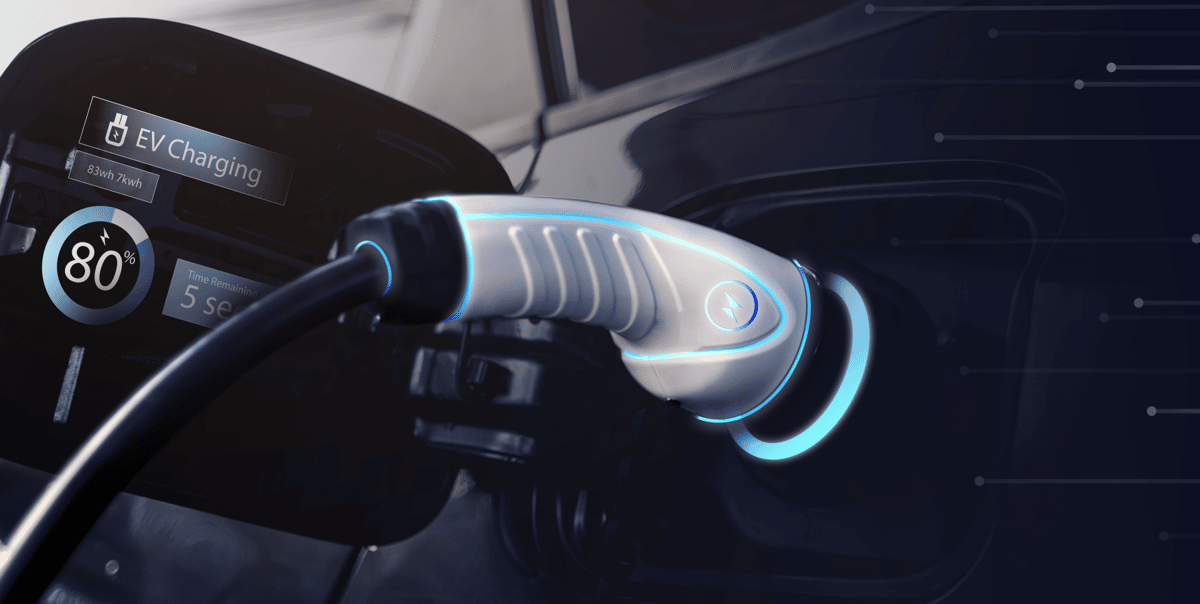How to Choose an EV Charger That is Right for You

4 Min. Read
EV (electric vehicle) charging is increasingly becoming a daily part of life for many Americans, Canadians and drivers elsewhere around the globe. Understanding the basics of chargers will help ensure a smooth experience of owning and using an EV.
Understanding EV Charging
One advantage for EV owners is never having to purchase gasoline again. Instead, they rely on a seemingly unlimited supply of electricity to fuel up wherever a charging station is present. Most owners charge up their vehicle while they are asleep or at work. While more cost-effective and better environmentally than gasoline-powered vehicles, such advantages depend heavily on the EV charging equipment itself. Home charging accounts for approximately 80% of all charging done for non-commercial electric vehicles.
Let’s look at charging solutions:
Level 1. Most manufacturers include a Level 1 EV charger with the purchase of a new car, which can be plugged into any standard 120-volt outlet. It takes a Level 1 approximately 20 hours to charge a car enough to go 124 miles and 43 hours to go 249 miles. For someone with a typical commute of 20 miles each way, using a Level 1 charger overnight may be adequate. However, most EV owners want to use their vehicle without range anxiety and downtime. So, they opt to purchase a stronger charger or use a public one and keep the Level 1 in the trunk for emergency use.
Level 2. These chargers are purchased separately from the EV but are up to 10 times faster than a Level 1. They require an experienced electrician or certified installer to set up. Level 2 chargers require a 240-volt outlet, such as the type required for an electric clothes dryer. Thus, you might have to upgrade your home’s electric panels or circuits. As with many Level 2 chargers, it takes approximately five hours to charge enough to drive 124 miles. Level 2 chargers have a specific connector for 240-volt charging.
Level 3. These charge EVs quickly, juicing up a vehicle for a range of 100 miles in only a half-hour. There are things to be aware of regarding Level 3 chargers:
- Not all EVs can use a Level 3 charger. Knowing your vehicle’s capability is important.
- They are fast when a vehicle’s state-of-charge (SOC) is low. However, after a battery is at least 80% charged, a Level 3 charger slows down. So, topping off a car to be fully charged may make more sense with a Level 2.
- You pay for the expediency. A fast charge is more convenient, but also more costly.
- The connectors are not the same as the ones you use with a Level 1.
Charging in Public
Public charging allows EV users to travel longer distances than allowed by relaying on charging their EV at home. Public chargers can often be found near shopping centers, large parking lots and business parks. They will become increasingly available along highways as the EV charging infrastructure expands. Much like gas station chains emerged, there are companies, including ChargeHub, Electrify America and Electrify Canada, which have established networks of charger stations that can be located and paid for using smartphone applications.
Most stations have Level 2 chargers, but you can now locate Level 3 chargers using smartphone apps. Many apps indicate whether the charger is in use before you get there. Public EV charging costs vary greatly based upon equipment, as EV users pay more for the convenience or utilizing faster chargers.
Public charging assists EV owners who cannot rely on charging at home or work, but it does cost more. Studies have shown that it’s approximately 30% less expensive in many areas to charge at home and pay for the electricity than paying at a public charge station.
Popular EV Charging Options for Residential Use
The number of charger types for home installation continues to grow along with the number of EV models. Different drivers, vehicles and installation locations present different charging needs.
Here are some popular current Level 2 choices for home use:
- The ChargePoint Home Flex is a compact, powerful option. It can give you 37 miles of range per hour at maximum amps, which may require electric panel upgrades. It features a connector holster that swivels and is back-lit, making it easy to use. It’s WiFi connected and you can use the ChargePoint app to control it.
- The JuiceBox EV charger powers an EV nine times faster than a Level 1 charger. The J1772 plug is compatible with all EVs, including Teslas. It can be installed indoors or outdoors and is designed for all weather conditions. Its 25 feet of cable gives users more freedom than some other options.
- Wallbox offers its Pulsar Plus 40A It can power up to 40 amps, and the unit works with all EVs. It can be controlled, including scheduled charging, using Alexa and Google Home commands, as well as the myWallbox app. Water resistant, it can also be installed outdoors.
- The sleek, modern-looking EVoCharge comes with an adjustable outlet that works at three different amperages.
- The Grizzl-E Charger is also for indoor/outdoor use. The unit provides up to 10 kilowatts of power and can be adjusted for four levels of Amp output. Made in Canada, it’s designed to withstand harsh weather conditions. Its 24-foot cable remains flexible on freezing cold days.
Getting Expert Advice and Installation Help
With so many EV charging options available, it can be difficult to determine the right Level 2 charger to purchase for home installation. Auto manufacturers can make recommendations, but turning to a third-party who can independently evaluate your needs, the type of car and your residential situation is invaluable.
About Qmerit
Qmerit is the trusted EV charging installation partner recommended by automakers. Rated #1 in customer satisfaction, we’ve installed over 269,000 charging stations across North America!
Join us in our mission to transform our planet to a more sustainable, energy-resilient, electric-powered future. Give us a call at (888) 272-0090 or complete our online EV assessment to receive an instant quote.
